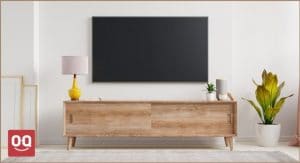Choosing between an ultrawide and a dual-monitor setup is an important decision for anyone who needs to work on multiple applications or documents simultaneously. Both setups offer distinct benefits, depending on the type of work you are doing and the amount of space you have available.
What Are the Advantages of an Ultrawide Setup?
The most notable benefit of an ultrawide setup is the extra-screen real estate. Ultrawide monitors offer a much wider field of view than two monitors side by side, allowing you to easily view multiple windows and applications at the same time. This can be especially beneficial in productivity applications such as video editing, where you can view source footage and the timeline simultaneously. Ultrawide monitors also offer a single, cohesive image, with no unsightly bezels or pesky gaps in between the monitors.
Ultrawide setups are also more cost-effective than dual-monitor setups, as you only need to purchase one monitor rather than two. Ultrawide monitors are also typically thinner and more aesthetically pleasing than two separate monitors. Plus, they don’t take up as much space on your desk. This makes them perfect for those who don’t have a lot of space in their home office.
What Are the Disadvantages of an Ultrawide Setup?
One of the main disadvantages of an ultrawide setup is that it tends to have a lower pixel density than dual monitors, meaning that they will not display as much detail in images and videos. Some users may also find it difficult to adjust to using a single ultrawide monitor after using multiple monitors. This is because the single monitor will have a much larger viewing area, making it harder to focus on individual tasks. Additionally, using an ultrawide monitor can be more of a strain on the eyes due to the increased amount of information presented on the screen. If you have sensitive eyes, you may find it uncomfortable to look at an ultrawide monitor for long periods of time.
What Are the Advantages of a Dual-Monitor Setup?
First and foremost, dual monitors allow for greater productivity by allowing users to view multiple applications side-by-side. This is especially useful for multitasking and working on large documents. Additionally, it allows for greater flexibility and customization as monitors can be placed in different orientations, making it easier to see different areas of the screen. This can be especially useful for gamers, which can have a larger field of view while playing.
Furthermore, dual-monitor setups can help reduce eye strain. This is because the user can move their eyes between monitors without having to continually shift their neck or head. This can help increase user comfort and reduce fatigue over long periods of use. Additionally, dual-monitor setups can also be used to extend the desktop, allowing users to have a much larger workspace for working on projects or for gaming purposes.
What Are the Disadvantages of a Dual-Monitor Setup?
One of the main disadvantages of a dual-monitor setup is the cost. The cost of two monitors, two sets of cables, and two graphics cards can be quite expensive. Additionally, if you plan on using a monitor arm or stand to mount the monitors, that can also add to the cost. Additionally, there can be compatibility issues between the two monitors, as they may not always support the same resolutions or refresh rates.
Another disadvantage of a dual-monitor setup is the space it takes up on your desk. The two monitors take up significantly more space than a single ultrawide monitor, and it can be difficult to arrange the two monitors in an aesthetically pleasing manner. Additionally, the cables for the two monitors can create clutter on your desk, making it difficult to keep it neat and organized.
Which One to Choose?
When deciding between an ultrawide and dual-monitor setup, the best option will depend on the individual’s needs and preferences. For those who need more screen space for multitasking, an ultrawide monitor is likely the best choice. On the other hand, for those who need more flexibility, a dual-monitor setup may be the better option. Ultimately, the choice between an ultrawide and dual-monitor setup is up to the user and their specific needs.
Find the best monitor setup for your needs with the help of TechnoQia. We are a technology blog committed to unbiased reviews, guides, and a variety of other content. We constantly update our content to make sure that it is accurate and relevant, and we always welcome feedback from our readers. Check out our content now!




